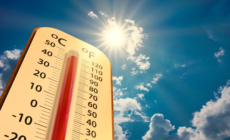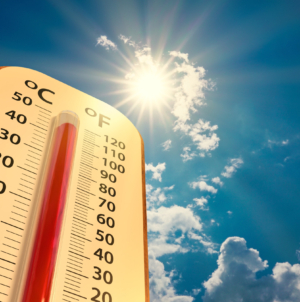-
Burned body found in brush fire in Santa Clarita - 25 mins ago
-
Map Shows 11 States Facing Extreme Record Heat - 28 mins ago
-
What if Everything We Know About Sacagawea Is Wrong? - 30 mins ago
-
Ozzy Osbourne Funeral: Black Sabbath Icon Requested This Song Be Played At Service - about 1 hour ago
-
A cop or a criminal? Police stop motorcyclist with uniform, badge and gun and learn he’s a convicted felon - about 1 hour ago
-
American Convicted of Murder Among Those Trump Rescued From Venezuela Prison - about 1 hour ago
-
Warning Issued Over Coffee Prices - 2 hours ago
-
A.G. Rob Bonta will move to take control of L.A. County juvenile halls - 2 hours ago
-
Aid Groups Blame Israel’s Gaza Restrictions for ‘Mass Starvation’ - 2 hours ago
-
Commanders Vet Makes History Landing WNBA Ownership - 2 hours ago
Map Shows States Where Northern Lights Could Be Visible Tonight, Tomorrow
Americans in multiple northern states may have a chance to see the northern lights this week.
According to a forecast from the National Oceanic and Atmospheric Administration’s Space Weather Prediction Center (SWPC), the aurora borealis could be visible in as many as 14 states over Tuesday and Wednesday night.
Why It Matters
While NOAA’s forecast may not guarantee a sighting, it offers a somewhat rare chance for residents of states ranging from Washington to Maine to witness the celestial phenomenon.
What To Know
According to the SWPC’s viewline forecast, the aurora borealis may be visible over parts of Washington, Idaho, Montana, Wyoming, South Dakota, Iowa, Wisconsin, Michigan, New York, New Hampshire, Vermont, and Maine on Tuesday night.
On Wednesday, the SWPC forecasts the northern lights could be seen over parts of Alaska, Washington, Idaho, Montana, Wyoming, South Dakota, Minnesota, Wisconsin, Michigan, Maine, and along New York’s northern border with Canada.
The SWPC explains that the northern lights occur when electrons collide with the upper reaches of Earth’s atmosphere. These electrons get a boost of energy in an area of Earth’s magnetic field on the night side of the planet.
Once energized, they then traverse along the magnetic field toward the polar regions. When they hit gases like oxygen and nitrogen high in the sky, they transfer their energy to those gases, which “excites” them. As the gases calm back down, they release that energy as glowing light.
During “large” events, the aurora may be visible as far south as parts of the United States, Europe, and Asia. In “very large” events, it can be seen even further away from the polar regions.
In addition to clear skies, visibility can depend on factors such as low light pollution and the intensity of the aurora at any given time. Even in areas within the forecast’s visibility band, cloud cover or city lights may prevent a sighting.

SWPC
What People Are Saying
Space Weather Prediction Center operations chief Mike Bettwy previously told Newsweek: “General tips include viewing late at night, away from city lights, and taking pictures with your iPhone or other technology since the aurora may be visible on those devices even though the human eye may not always detect it.”
The Space Weather Prediction Center says: “The aurora is not visible during daylight hours. The aurora does not need to be directly overhead but can be observed from as much as 1000 km away when the aurora is bright and if conditions are right.”
What Happens Next
The SWPC issues frequent forecast updates. Anyone hoping to catch a glimpse of the aurora borealis should consult the latest outlook and head to dark, clear spots with a good view of the northern horizon.
Source link



















